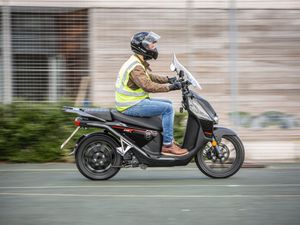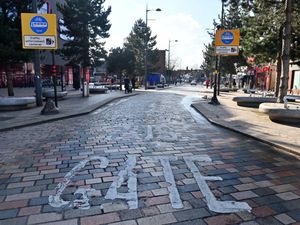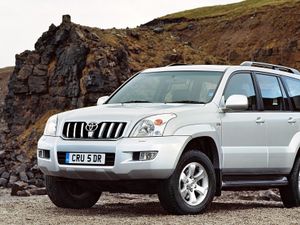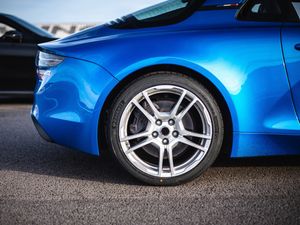Can electric motorcycles be an easy entry into clean mobility?
We get to test out how a battery-powered motorcycle can change the way we ride.

Electric power is a big talking point at the moment. Particularly in the world of cars, battery power is taking full effect as many manufacturers pivot to move away from conventional propulsion methods in favour of electric as a way of reducing emissions.
But for many people – particularly those living in the city – an EV can still prove to be a difficult mode of transportation. What’s the alternative? Well, something we’ve been testing out recently is the battery-powered motorcycle.
Where to begin? Things kick off with a CBT. Rather than electric scooters – the types of which are being used in trials within major cities across the UK – electric motorcycles require you to complete your Compulsory Basic Training just as you’d need to do with a 125cc motorcycle or scooter.

The training starts with some basic familiarisation of the motorcycle or scooter you’re riding. One thing this really flags up is how few areas of maintenance are required on an electric motorcycle compared with a petrol version. The Super Soco CPx we’re riding features a twin-battery setup, but save for conventional consumables like tyres and brake pads, there’s very little to check. Compare that with oil levels, temperatures and gear linkages that you need to look over on a petrol bike and it’s clear to see just how much easier battery power could be to get along with – particularly for those who are relatively unfamiliar with mechanics.
The next part of the training involves some low-speed manoeuvres. You need to successfully ride around smooth curves and a complete figure of eight, all of which are completed in eerie electric silence. Against the backdrop of the fizzy 125cc engines our fellow riders are using, the CPx feels almost alien. Certainly, it gets some looks from the examiners as we saunter around the test area without making a sound.

You might think that all of these actions would be having a real drain on the batteries, but no. After we’d finished up the low-speed moves, just a single per cent had been wiped off the scooter’s range, leaving us plenty in the ‘tank’ for the on-road part of the training.
But before that, some theory. All riders need to brush up on standard Highway Code questions to ensure that they’re up to speed with the way of the road, taking in aspects such as traffic signs, speed limits and other safety aspects. This is the same regardless of the type of motorcycle you’re completing the course on, too.

Finally, there’s the last on-road section where we ride on the public road while being monitored by the examiners. One thing that is immediately noticeable about the CPx is the impressive lack of noise, particularly against the other 125s that we’re riding with. It’s also got a power output equivalent to a 125cc motorcycle so, despite a complete absence of engine noise, you don’t feel underpowered or left behind. Three power modes allow you to adjust how much performance you want, too, and this helps you to better manage the bike’s range.
Plus, this route – which takes around two hours – barely dents the Super Soco’s battery, leaving us with more than enough range to get home after the course is over.
But once you’ve got your CBT, what other benefits do electric motorcycles bring? One of them is lower running costs. Now, 125cc motorcycles and scooters are notoriously fuel-efficient, but even they struggle to come up trumps against this electric two-wheeler. Whereas a 125cc motorcycle doing around 100mpg will cost 5p per mile to run, Super Soco estimates that the CPx will cost under 1p a mile with electricity costs at current rates. Plus, whereas you’ll pay £21 a year to tax a petrol scooter, electric scooters incur no cost whatsoever.
Prices for the CPx start from £3,599 for a single-motor version after the government’s Office for Zero Emissions Vehicles (OZEV) grant – which takes up to £1,500 off the cost of a new zero-emissions motorcycle or scooter – has been applied. This is par for the course when it comes to 125cc motorcycles, with many other rivals hovering around the £2,500 to £4,000 mark.

When it comes to electric cars, many people struggle when it comes to charging – particularly those who don’t have off-street parking. The CPx helps to take away this issue with removable batteries, which can be lifted out of the bike and charged remotely. This doesn’t mean just at home, but you could plug them in at an office, too, and a full charge takes between three and four hours. Ensure that you’re charging up from green energy suppliers and you’ll only help to drive down the bike’s overall emissions further too.
However, the drawback here is that you’ll struggle to charge when on the move since you can’t use conventional EV charge points – so mid-journey top-ups aren’t really feasible. With 87 miles of range, however, there should be more than enough in the ‘tank’ for most commutes and journeys.

So is an electric motorcycle a good way of getting around? Definitely. For those looking to commute or even just use a low-cost way of travelling from A to B, then it makes a huge amount of sense. Of course – and as is the case for electric cars – those travelling longer distances might not find an electric motorcycle to be the best fit, but for people with smaller journeys they could prove ideal.
The fact that bikes like the CPx are CBT friendly means that it’s a breeze to get behind the bars and once you’re up and running there’s little chance you’ll feel like getting off again.





